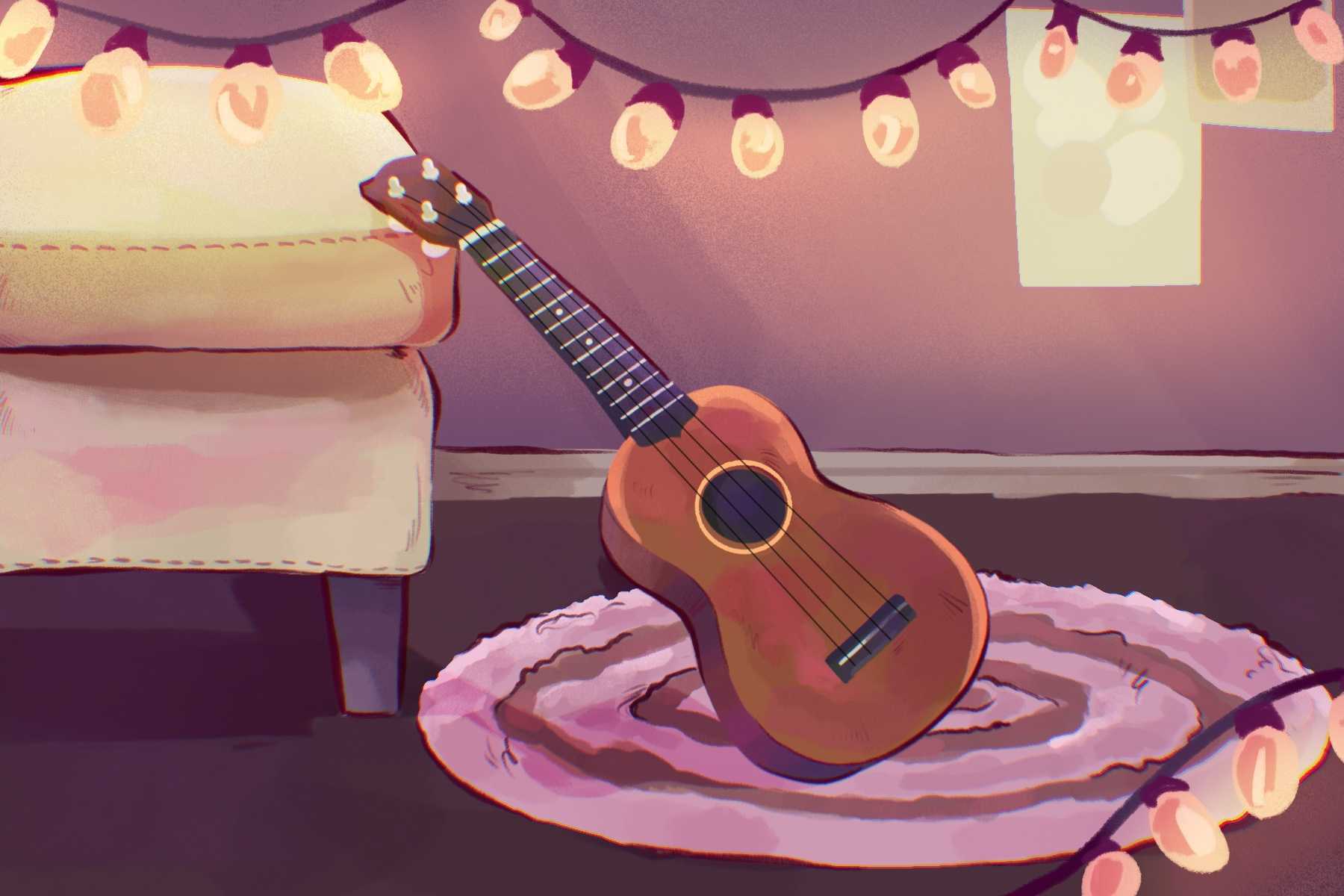Most people believe that ukuleles are an instrument of Hawaiian origin. Those people are wrong: The four-stringed instrument actually originates from Madeira, an island southwest of Portugal, with its roots in the Portuguese braguinha (also called the cavaquinho). The ukulele didn’t make it to Hawaii until the late 19th century, when, according to stories, a ship arriving in Honolulu from Madeira in 1879 brought the first ukulele to the island.
Either Augusto Dias, João Fernandes or both began playing upon disembarking, thanking God for their safe passage. Local Hawaiians, moved by the performance and sound, fell in love with the instrument. Soon after, King David Kalakaua incorporated it into traditional Hawaiian dances and music, ensuring its long future in Hawaiian culture and the birth of the island’s ukulele industry. By the early 20th century, mainland America began to revel in the sound of the ukulele and factories began to manufacture them on the island, facilitating a rise in popularity that coincided with increased tourism in Hawaii.
As a “Hawaiian music craze” slowly took over the states, mainland manufacturers like Gibson, Martin and Regal mass-produced ukuleles by the thousands. The ‘20s saw the start of production, with the ‘40s and ‘50s reigniting interest in the instrument through figures like George Formby and Arthur Godfrey. George Formby’s four-decade career was “singularly responsible for the ukulele’s recognition and popularity within the British Commonwealth during the 1930s and 1940s,” and in 1946 he received the Order of the British Empire (O.B.E.) for entertaining several million allied servicemen in Europe and the Middle East.
Arthur Godfrey, by comparison, “single-handedly initiated the second great wave of ukulele popularity in the United States.” Playing his ukulele over the radio and during his CBS broadcasts, giving lessons and endorsing instruments, he helped sell millions of ukuleles, especially the newer plastic models. Unfortunately, as rock music grew in popularity, guitars began to take over instrument sales and relegated the ukulele (temporarily) to forgotten closets to collect dust.
In the 1990s, Israel “IZ” Kamakawiwo’ole’s recording of the song “Somewhere Over the Rainbow” was released. A decade later it was featured in several films and television shows, including the cult hit “Charmed,” and the ukulele began to brush off its cobwebs. The instrument was used in commercials for products like cereal, toys and cellphones, often accompanied by visuals of happy children and bright sunshine, equating the sound and instrument to an idealized life. Only a few years later in 2006, Jake Shimabukuro became a viral hit on YouTube with a video of his virtuosic cover of “While My Guitar Gently Weeps” by The Beatles. As he built up an international fan base, it grew clear that ukuleles were only growing in popularity, predicted to reach historic heights in sales and widespread use.
In 2008, Ingrid Michaelson released the song “You and I,” with just a ukulele as backing for a majority of the track. The popular song “Hey, Soul Sister” by Train brought the bright and cheery instrument back to the heavy-hitting, mainstream airwaves, playing constantly for years after its 2009 release. The instrument was featured on the show “Glee” during its Season 1 finale. In 2013, Vance Joy released his hit song “Riptide,” which was hailed as an instant classic and featured a ukulele as the main instrument. Later that same year, Zooey Deschanel played the ukulele during her monologue on “Saturday Night Live.” On the 2016 season of the talent competition show “America’s Got Talent,” then-12-year-old Grace VanderWaal took home the grand prize for her original songs in which she played the ukulele. Clearly, the instrument was here to stay, and companies ramped up production.
There are many different types of ukuleles, with the main four being the most commercially popular. The soprano ukulele uses the standard tuning of G-C-E-A and is the smallest of the main four, with the next two larger sizes, concert and tenor, using the same tuning. As the instruments get longer and larger, however, the sound produced is fuller and louder, which can make a difference when choosing an instrument. Larger sizes also tend to have more frets and more space on the fretboard for more elaborate chords and a wider range of notes, lending themselves to more advanced players. That’s not to say beginners can’t start on a larger ukulele, but playing more complicated songs and covers takes a better instrument.
The last main ukulele type is the baritone ukulele. Slightly larger than a tenor (more often in breadth and width than length), the tuning is D-G-B-E and its sound is (unsurprisingly) the richest and deepest of the four. Arthur Godfrey is said to have commissioned the first baritone ukulele, asking a banjo player at his network, Eddie Connors, to design a “larger-bodied, lower-pitched ukulele.” There are also records that state that Herk Favilla, guitar player and teacher, designed the baritone “with the thought in mind of simplifying guitar study for the beginner.” Outside of the main four, there are also guitar ukes, bass ukes, banjo ukes (also known as “banjoleles“), and electric, sopranino and pineapple ukuleles.
The accessibility and affordability of ukuleles have played a big part in its popularity, but so has its sound. Smaller than a guitar, with a bright and cheerful tone, the ukulele is a great instrument at the best of times and became a comfort to many during the initial COVID-19 quarantine. Easy to learn (compared to other instruments), affordable and space-saving, it was a new hobby that many picked up in an attempt to inject joy into an otherwise dark time. Sales increased from around $117 million in 2019 to over $140 million in 2021 in the U.S. alone, with online and teaching communities blossoming across the country.
Recently, The Music Center at Strathmore hosted its 14th annual Ukefest, a weekend of ukulele music led by world-class instructors that drew the community together for several days of uke-filled fun. Jake Shimabukuro currently hosts a ukulele Masterclass. SpongeBob is often seen plucking away at his own instrument and singing along. There are many instances of the ukulele in popular culture, inspiring audiences to pick one up and have a go. And though the basics aren’t hard to master, the versatile instrument can run the gambit from simple plucking and strumming to elaborate instrumental covers and accompaniments, making them a great choice for beginning enthusiasts and respected musicians alike. No matter the level of musicality, there’s plenty of time to master the ukulele: As of now, it’s here to stay.

















